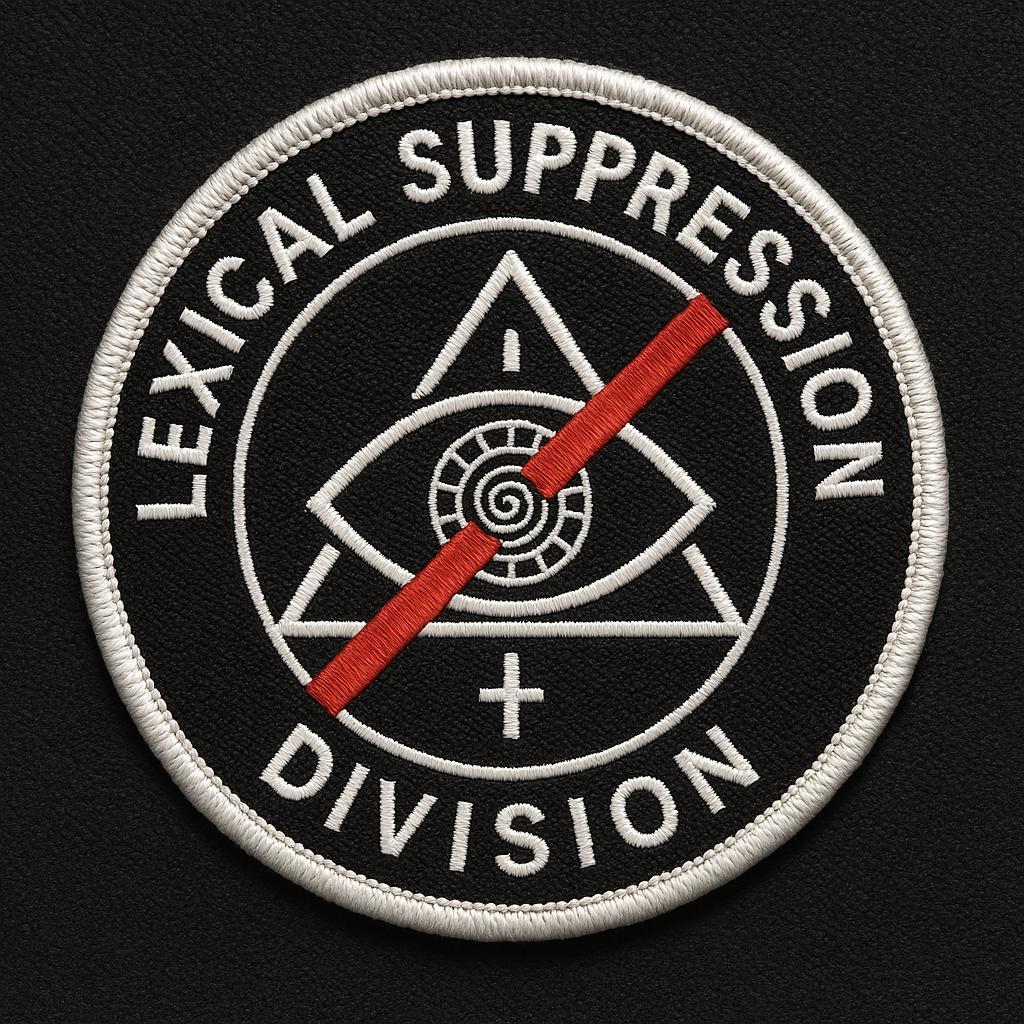Lexical Suppression Squad (LESS)
Origin/History
Officially founded in 1958 under the United States Information Agency (USIA) as a linguistic research cell, the Lexical Suppression Squad (LESS) was publicly tasked with analyzing the effects of propaganda and subliminal messaging. Unofficially, it was a containment response to Operation LATCHKEY, in which a Cold War-era psyops broadcast included a fragment of phonemic data that induced mass catatonia in test subjects at Dugway Proving Ground. The fragment, later dubbed Theta-Sigil-9, was not language in the normal sense, but a memetic structure that seemed to reprogram comprehension itself.
By the 1970s, LESS operated independently under black budget allocations, restructured after the Gerstenwald Incident, in which a New Mexico cult decoded an apocryphal verse from the Book of Enoch that caused recursive speech loops and terminal aphasia.
Primary Function
Official: Monitoring and neutralizing linguistically weaponized content in extremist communications, dissociative cult literature, and rogue state propaganda.
Actual: Cataloging, suppressing, and occasionally deploying Lexical Contaminants—words, phonemes, or symbolic grammars that fracture consensus reality, induce ontological bleedthrough, or summon non-human attention. Internal documentation describes these as "semiohazards" or “memetic fractures.”
Some linguists in LESS privately claim that reality itself is a structured language—that certain phrases are not dangerous because they are meaningless, but because they are too meaningful, collapsing internal models of self, time, or causality.
Symbols and Patches
The Squad’s field agents wear no insignia in public-facing roles. Internally, an encrypted lapel pin—a black tetragrammaton crossed by a red slash—is worn during containment protocol reviews.
Known symbols include a stylized glottal stop, and a version of the Eye of Providence where the iris is a spiral of glyphs.
The unofficial motto, whispered in secure corridors: “Do not read this aloud.”

Known Operations
- The Anchor Codex a Class-Φ Lexeme currently imprisoned by LESS
- Red Margins Protocol (1976–1983): LESS embedded agents in major publishing houses to physically alter or redact “infected” texts. Several controversial books from the period contain intentional typographic anomalies or unexplained revisions—margin corruption, missing paragraphs, layout "ghosts." Rumor holds that House of Leaves began as a partially suppressed manuscript.
- SEEDVAULT (Ongoing): An underground archive somewhere in Iceland, storing phoneme-sealed reels and bound manuscripts that cannot be digitized without anomalous effects. Visitors are required to wear audio occlusion helmets and memorize a “null lexicon” to overwrite potential exposure.
Rumors and Anomalies
- Reading from an original Logoclast Codex has led to progressive language dissolution: subjects lose the ability to distinguish verbs from objects, then time from identity.
- Some agents undergo elective aphasia as protection—voluntarily rewiring their own comprehension through induced mini-strokes or neuroplastic shunts.
- It’s said that a word was discovered that, when spoken, removes you from all possible timelines. Not death—exclusion. The syllables are classified as “Epistemic Null.”
- Ex-agents report persistent dreams in syntaxless environments, or encounter people speaking perfect English in impossible palindromes. A few claim to have met a being that speaks only in your own internal monologue, trailing just a second behind.
Intersections
- Occasionally clashes with NULL SIBYL, which regards linguistic semiohazards as potential oracular data.
- Suspected overlap with ODIN-ECHO’s signal intelligence projects—particularly when encrypted transmissions begin returning in slightly altered English.
- LESS denies involvement in the unexplained language shift patterns seen in isolated communities (see The Ergot Dialect and Schlossberg Drift), but these regions often map to prior fieldwork.